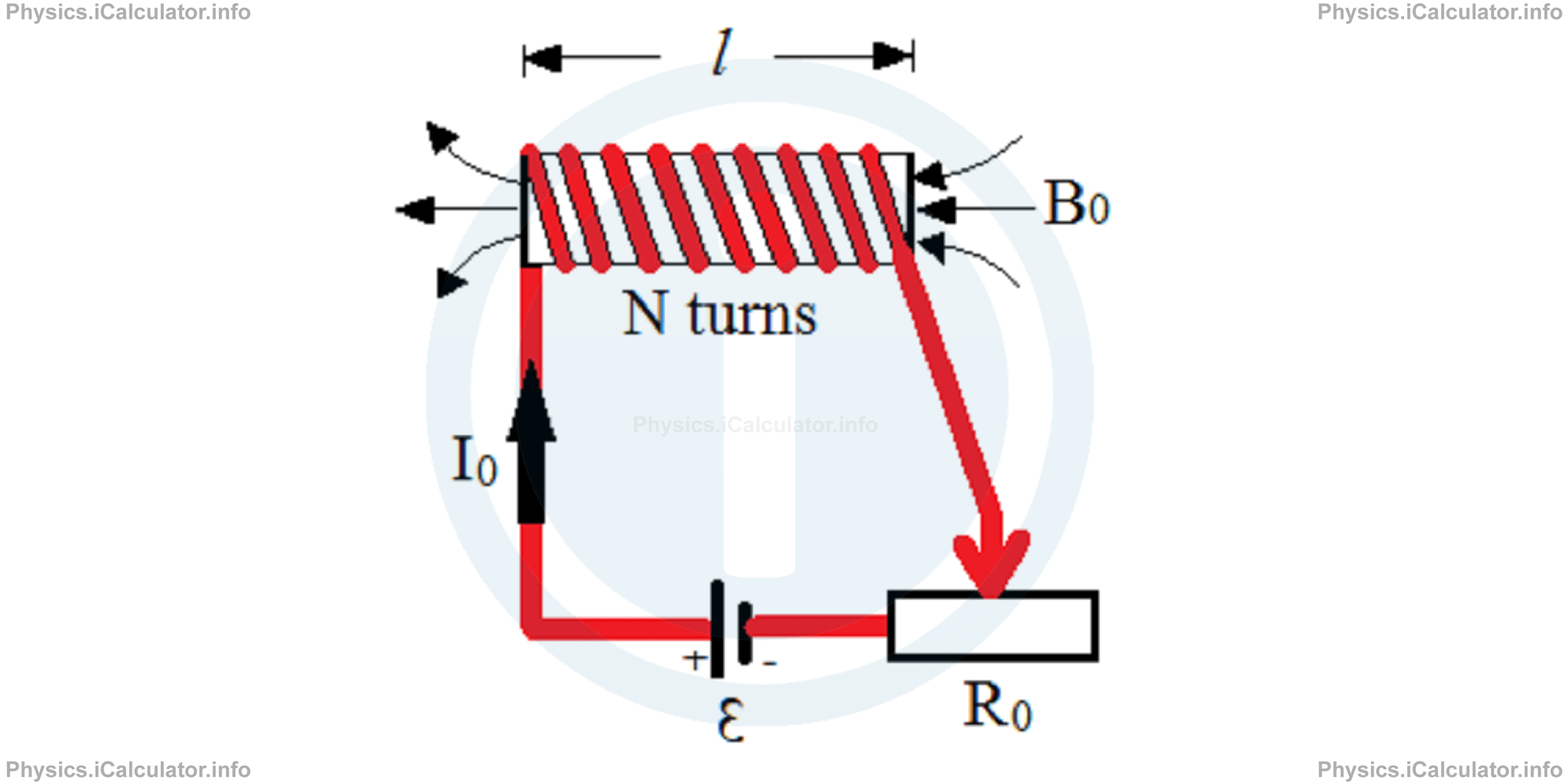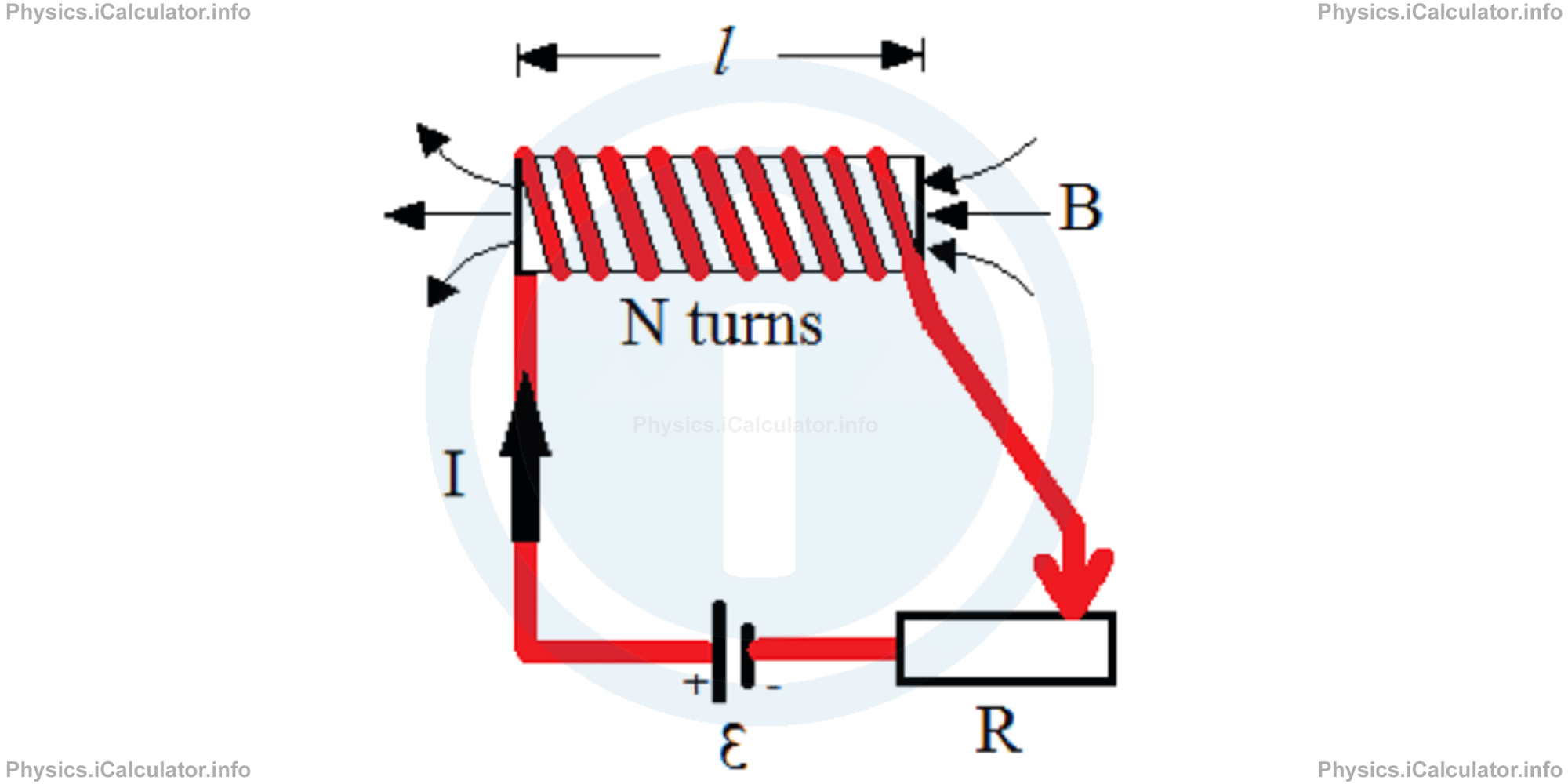Menu
Physics Lesson 16.9.1 - The Meaning of Inductance
Please provide a rating, it takes seconds and helps us to keep this resource free for all to use
Welcome to our Physics lesson on The Meaning of Inductance, this is the first lesson of our suite of physics lessons covering the topic of Inductance and Self-Induction, you can find links to the other lessons within this tutorial and access additional physics learning resources below this lesson.
The Meaning of Inductance
So far, we have seen many similarities between electric and magnetic phenomena and we have used the analogy between the corresponding quantities to have a better understanding on the new quantities (usually magnetic ones, because electricity was explained earlier). For instance, we have described the magnetic field through the help of electric field, magnetic flux using the analogy with electric flux and so on.
Let's use the same method to explain a new magnetic-related concept. In tutorial 14.7 "Capacitance and Capacitors", we have seen that capacitors are circuit components used to store electric charges in their plates. In this way, we can produce a desired electric field between the plates of a capacitor because they are charged by opposite signs. We considered the basic arrangement of capacitors as the parallel plate capacitor, having the symbol (-| |-).
Similarly, we call an "inductor" a device used to produce a desired magnetic field. The symbol of inductor is ( ). A solenoid is the most typical example of conductor.
). A solenoid is the most typical example of conductor.
Let's consider as solenoid connected to an electric circuit that contains a battery and a rheostat (variable resistor) as shown in the figure. This is a kind of electromagnet because the current passing around the coil produces a magnetic field similar to that of a bar magnet.

The solenoid has N turns and its length is l. The rheostat is initially in the position 1 and therefore, its resistance is R0 and the current produced in the circuit is I0. As a result, the initial magnetic field produced by this electromagnet is B0.
We can change the magnetic field produced in the coil by changing the value of resistance of the circuit. This can be achieved by moving the sliding contact of rheostat in another position. As a result, we will obtain the new values R, I and B for the corresponding quantities, as shown in the figure below.

The initial current flowing through the solenoid is
When the sliding contact of rheostat is moved in the new position, the current flowing through the solenoid becomes
We have explained in the tutorial 16.2 that the magnetic field produced by a solenoid is
where μ0 is the vacuum permeability, N is the number of turns in the solenoid, I is the current flowing through the circuit and l is the solenoid's length. The initial magnetic flux through the solenoid therefore is
= μ0 ∙ N ∙ I0/l ∙ A
where A is the area of solenoid loops, and the final flux through the solenoid is
= μ0 ∙ N ∙ I/L ∙ A
Therefore, the induced emf produced by the solenoid (known as self-induced emf because it is not generated by the flux change due to any motion in respect to an external magnetic field), is
= -N ∙ Φ-Φ0/Δt
= -N ∙ μ0 ∙ N ∙ I/L ∙ A-μ0 ∙ N ∙ I0/l ∙ A/Δt
= -N ∙ (μ0 ∙ N ∙ A/l) ∙ (I-I00/Δt)
Thus, we obtain for the self-induced emf in the coil:
We denote by L the expression inside the brackets. This quantity is known as self-inductance (or simply inductance). It depends only on the physical features of the solenoid (number of turns, area, length) and not on the electric properties of the circuit. The unit of self-inductance is known as Henry (H).
Thus, having
we obtain for the self-induced emf in the coil in terms of inductance:
As stated at the beginning of this tutorial, coils are known as "inductors" just because of their property of self-inductance.
Example 1
A 20 cm long solenoid having a cross sectional area of 4 cm2 contains 500 turns per metre. The solenoid is connected to a 12 V battery through a rheostat.
(Take the figure shown in theory section as a reference)
Solution 1
Clues:
l = 20 cm = 0.20 m
A = 4 cm2 = 0.0004 m2 = 4 × 10-4 m2
n = 500 turns/metre = 5 × 102 turns/metre
ε = 12 V
(μ0 = 4π × 10-7 N/A2)
R0 = 24 Ω
R = 6 Ω
Δt = 0.4 s
a) L = ?
b) ε' = ?
- First, we calculate the number of turns in the solenoid. We have N = N ∙ l
= 500 turns/m ∙ 0.20 m
= 100 turns
= 102 turns - The self-inductance of the solenoid is L = μ0 ∙ N2 ∙ A/I
= (4 ∙ 3.14 ∙ 10-7 N/A2 ) ∙ (102)2 ∙ (4 × 10-4 m2 )/(0.20 m)
= 2.512 × 10-5 H
You have reached the end of Physics lesson 16.9.1 The Meaning of Inductance. There are 3 lessons in this physics tutorial covering Inductance and Self-Induction, you can access all the lessons from this tutorial below.
More Inductance and Self-Induction Lessons and Learning Resources
Whats next?
Enjoy the "The Meaning of Inductance" physics lesson? People who liked the "Inductance and Self-Induction lesson found the following resources useful:
- Definition Feedback. Helps other - Leave a rating for this definition (see below)
- Magnetism Physics tutorial: Inductance and Self-Induction. Read the Inductance and Self-Induction physics tutorial and build your physics knowledge of Magnetism
- Magnetism Revision Notes: Inductance and Self-Induction. Print the notes so you can revise the key points covered in the physics tutorial for Inductance and Self-Induction
- Magnetism Practice Questions: Inductance and Self-Induction. Test and improve your knowledge of Inductance and Self-Induction with example questins and answers
- Check your calculations for Magnetism questions with our excellent Magnetism calculators which contain full equations and calculations clearly displayed line by line. See the Magnetism Calculators by iCalculator™ below.
- Continuing learning magnetism - read our next physics tutorial: Induction and Energy Transfers
Help others Learning Physics just like you
Please provide a rating, it takes seconds and helps us to keep this resource free for all to use
We hope you found this Physics lesson "Inductance and Self-Induction" useful. If you did it would be great if you could spare the time to rate this physics lesson (simply click on the number of stars that match your assessment of this physics learning aide) and/or share on social media, this helps us identify popular tutorials and calculators and expand our free learning resources to support our users around the world have free access to expand their knowledge of physics and other disciplines.
Magnetism Calculators by iCalculator™
- Angular Frequency Of Oscillations In Rlc Circuit Calculator
- Calculating Magnetic Field Using The Amperes Law
- Capacitive Reactance Calculator
- Current In A Rl Circuit Calculator
- Displacement Current Calculator
- Electric Charge Stored In The Capacitor Of A Rlc Circuit In Damped Oscillations Calculator
- Electric Power In A Ac Circuit Calculator
- Energy Decay As A Function Of Time In Damped Oscillations Calculator
- Energy Density Of Magnetic Field Calculator
- Energy In A Lc Circuit Calculator
- Faradays Law Calculator
- Frequency Of Oscillations In A Lc Circuit Calculator
- Impedance Calculator
- Induced Emf As A Motional Emf Calculator
- Inductive Reactance Calculator
- Lorentz Force Calculator
- Magnetic Dipole Moment Calculator
- Magnetic Field At Centre Of A Current Carrying Loop Calculator
- Magnetic Field In Terms Of Electric Field Change Calculator
- Magnetic Field Inside A Long Stretched Current Carrying Wire Calculator
- Magnetic Field Inside A Solenoid Calculator
- Magnetic Field Inside A Toroid Calculator
- Magnetic Field Produced Around A Long Current Carrying Wire
- Magnetic Flux Calculator
- Magnetic Force Acting On A Moving Charge Inside A Uniform Magnetic Field Calculator
- Magnetic Force Between Two Parallel Current Carrying Wires Calculator
- Magnetic Potential Energy Stored In An Inductor Calculator
- Output Current In A Transformer Calculator
- Phase Constant In A Rlc Circuit Calculator
- Power Factor In A Rlc Circuit Calculator
- Power Induced On A Metal Bar Moving Inside A Magnetic Field Due To An Applied Force Calculator
- Radius Of Trajectory And Period Of A Charge Moving Inside A Uniform Magnetic Field Calculator
- Self Induced Emf Calculator
- Self Inductance Calculator
- Torque Produced By A Rectangular Coil Inside A Uniform Magnetic Field Calculator
- Work Done On A Magnetic Dipole Calculator